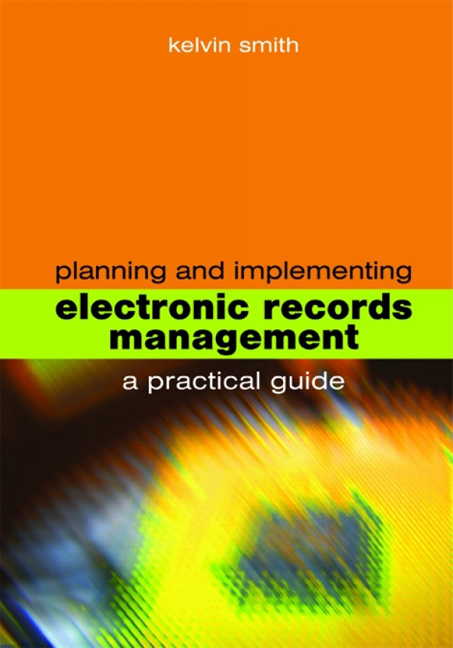Introduction
Published online by Cambridge University Press: 08 June 2018
Summary
First of all I would like to emphasize that this book focuses very much on the practical aspects of the planning and implementation of electronic records management systems. It does not dwell on academic theory; while it puts the theory of the subject into context where necessary, explaining for example the role of authenticity, reliability and integrity of electronic records, its aim is to provide you with practical guidance that enables you to get on and do electronic records management.
The book is aimed at information managers in all organizations, in both public and private sectors. You may be records managers, archivists or even knowledge managers. Whatever area is your focus, the content of the following pages has been designed to meet that situation where your management board or executive team have just declared that ‘we had better look at how we can manage our information more effectively and more efficiently’ or ‘let's go ahead and acquire an electronic records management system’ - and you and your colleagues have been told to get on and do it. The layout follows a logical pattern and tries where possible to provide examples and pointers to further information, such as sample requirements and references to detailed toolkits. A glossary of frequently used terms appears in Chapter 2 (page 19).
The opening chapter describes the underlying principles of records management but for the most part the following pages presume that you have some grounding in the subject and that your organization has at least given the go-ahead to examine the feasibility of introducing electronic records management. It may even have made a firm commitment in that direction.
Software solutions to implement electronic records management are now so numerous and diverse that it would be impossible to provide guidance in the form of a detailed toolkit. To a large extent you will want the software to fit your business needs, not the other way round. You need to tell suppliers what you need, not let them tell you what you think you need. In this respect the requirements at the end of the chapters in Part 2 on design are necessarily a sample and set at a high level. Detailed requirements necessary for effective planning and implementation need to be developed according to individual organizational requirements. Implementing electronic records management is much more than implementing a piece of software.
- Type
- Chapter
- Information
- Planning and Implementing Electronic Records ManagementA practical guide, pp. ix - xPublisher: FacetPrint publication year: 2007



